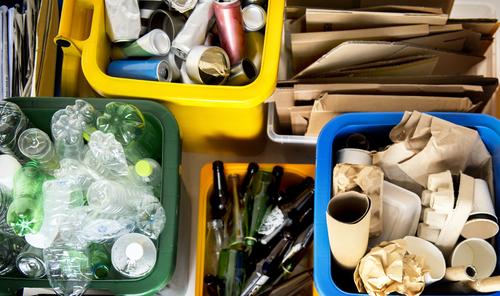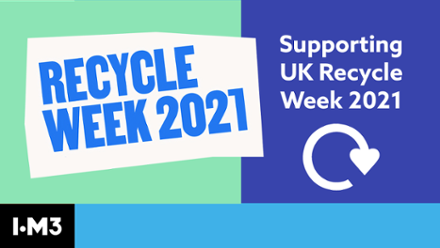How does recycling help to address the climate crisis?
To celebrate Recycle Week, our IOM3 Sustainable Development Group member, Tessa Lee GradIMMM, unpicks the reasons why recycling can help in the global battle against climate change.

Tessa provides an overview of why consumption of products can contribute to climate change, outline how recycling can mitigate these contributions and finally, assess some of the policy ambitions for the UK.
Firstly, to begin answering this question, a good starting point is to examine a system where there is no recycling. This type of system is also known as a linear system. In a linear system, the materials required to make a new product are extracted from the natural environment. This could be cotton used to make a shirt, crude oil for a plastic plate or iron ore for steel reinforcements in a bridge. A technique called Material Flow Analysis (MFA) can be used to quantify the raw materials used by an economy. A global scale analysis, conducted for the year 1999, found that 50,000 megatonnes of material are extracted per year globally which averages at 8 tonnes of material per person (Schandl and Eisenmenger 2006a). Globally, material extraction contributes significantly to climate change. In fact, a report by the Global Resources Outlook published in 2019 found that half the world’s carbon emissions are produced by extractive industries (Schandl and Eisenmenger 2006b). Therefore, the reduction of raw material extraction, which can be achieved through recycling and the use of recycled materials in new products, is an important lever in reducing greenhouse gas emissions and fighting climate change.
In a linear system, after a product has been used for its useable lifetime, it is disposed of as waste. A MFA conducted in 2000 found that in industrial economies over a half of resources used in any given year are returned as waste. This demonstrates the short lifetimes of many of the products we use today. When a material is processed as waste, in general there are three end-of-life options for it – recycled, landfilled, or incinerated.
Here, I will focus on the two end of life options used in a linear system:
- Landfilling, thanks to the introduction of high landfill taxes in the UK, has decreased over the past few decades and is now at 25% of all waste by mass (UK Statistics on Waste 2017). However, landfilling is still the largest contributor to greenhouse gases in the waste sector (CCC 2020), mainly because of methane production which is a potent greenhouse gas. This is why the CCC has listed reduction of waste to landfill, especially biodegradable waste, as an option for reducing emissions in their latest carbon budget (CCC 2020)
- Incineration currently processes 6% of all UK waste by mass, with over half of all incineration generating energy too (UK Statistics on Waste 2017). Incinerating waste produces three products, energy, bottom ash and gases, including carbon dioxide. It can therefore be argued that incineration is just the transfer of a solid waste flow into a gaseous waste flow (Matthews 2000). In addition, a report by Zero Waste Europe recently found that producing energy by incineration uses two times more energy than the average energy produced for the electricity grid.
Therefore, neither landfilling nor incineration appear to be satisfactory end of life options for material to achieve our goal of reducing climate change.
With the linear system in mind, we can come back to the question of how can recycling help to address the climate crisis. Firstly, a system which includes recycling is often called a circular system or a circular economy because the waste from one system is used as the raw material in a new product, creating circular material flows. The Ellen MacArthur Foundation found that moving to a more circular economy could reduce carbon emissions by 40% per sector). A figure which is huge and demonstrates the enormous potential for recycling to contribute to climate change mitigation. However, currently the global economy is estimated to be only 8.6% circular (Circle Economy 2020), meaning there is a lot of work still to be done to increase recycling and circularity in both the UK and globally.
In the UK, progress is being made. Importantly, the UK’s updated Nationally Declared Contribution, submitted as part of the Paris Climate Agreement, outlines how the UK is going to meet its carbon emission reduction targets, includes a section titled, 'Sustainable lifestyles and sustainable patterns of consumption and production,' which states its ambitions to move from a linear to a circular economy (The United Kingdom of Great Britain and Northern Island 2020). The hope is that these ambitions will be clearly reflected in emerging policy such as the UK Environment Bill to prompt largescale movement towards a circular economy.
In conclusion, recycling represents a clear opportunity to reduce the negative environmental impacts associated with landfilling, incineration, and extraction of virgin materials. I hope to have demonstrated that recycling is a crucial part of reaching the climate commitments outlined in the Paris Climate Agreement and that there is much work still to be done to increase global material circularity to the levels required to adequately address the climate crisis.
Tessa Lee, GradIMMM
IOM3 Sustainable Development Group








